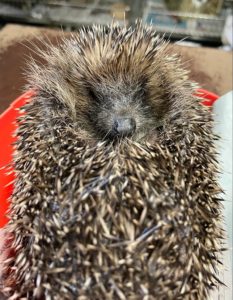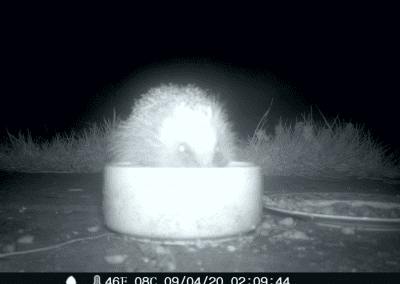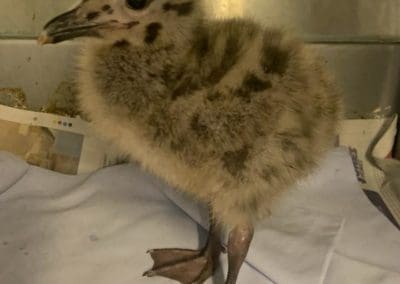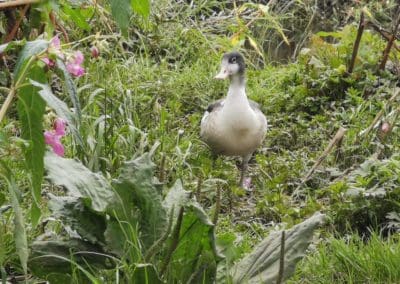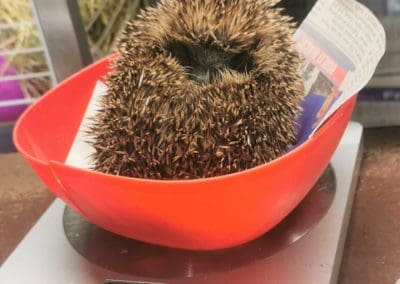
When a hedgehog hibernates, they are not really asleep, but instead they lower their body temperature which causes them to enter a state of torpor. On milder days, throughout the winter period, it can be normal for a hedgehog to wake up and be out looking for a little snack, before returning back to their nests to hibernate.
We have been receiving lots of phone calls from worried members of the public who have seen a hedgehog out during the night-time looking for food – so we want to spread the word that this is a normal behaviour. However, if the hedgehog looks injured or unwell it is always best to seek advise and give us a call on 0151 931 1604.
With the bad storms hopefully behind us, we should start seeing an increase in temperatures and by April all hedgehogs should be awake and hopefully ready to be released.
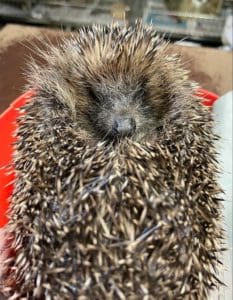
Out and about in February
Now is the time to enjoy crocus, a bulb worth planting, which is useful for early pollinators. Crocus aren’t native to Britain, they were originally found growing wild across much of central and southern Europe, North Africa, the Middle East and China. One of the most common species now found growing wild in the UK is the Crocus tommasinianus, which has delicate lilac flowers and narrow leaves, and was first recorded in woodlands in 1963.
Female badgers, known as sows, give birth very early in the year, often in January or February. Cubs born now will take their first steps above ground in roughly 8-10 week’s time, during the spring. If the new mother is low-ranking, she may lose her litter in an outbreak of interclan violence. The helpless young are most at risk from the sett’s dominant, highest-ranking sow. The cubs might also be killed by an adult male if he’s not sure of their paternity.
The goat willow, pussy willow or great sallow, is a tree that delivers in every season. In spring and summer, it is perhaps best-known as a food-plant for caterpillars of the purple emperor butterfly. But for now, in late winter, it gives a much-needed boost to the first emerging insects.
So much so, a flowering goat willow on a fine February day is often covered by swarms of feeding hoverflies, flies, bumblebees and solitary bees.
Before winter is out, new life stirs in still-bare treetops. Come February, mistle thrushes are singing their mournful, far-carrying song over and over from the highest branches, great spotted woodpeckers are drumming on dead wood to announce their territory, and safe in their dreys, female grey squirrels are nursing their first young of the year.
Rooks also begin breeding remarkably early. Their rookeries in the crowns of tall oak and ash are already a hive of activity in February, as established pairs bring sticks to patch up their battered nests or try to steal them from their neighbours. Rooks mate for life, which is rare among British birds, but the norm among corvids and devoted partners will sit beside their nest to groom one another affectionately. Known for their social intelligence, they are able to recognise individual birds in their colony.
The weasel is one of the fastest breeders in the mustelid family, and in years with plenty of voles, youngsters born in spring will breed in summer. Last summer’s males will start looking for mates in February and March.
Live fast, die young could be the weasel’s motto. Of the seven mustelids found in Britain, it has the shortest lifespan, rarely over 12–18 months. Small size and an energetic hunting style mean it rapidly burns through energy reserves and consumes about a third of its body weight every day in order to survive.
Did You know?
Only half a Dolphin’s brain sleeps at a time?
Dolphins are mammals so although they live in the sea and can hold their breath for an exceptionally long time, they do have to come up for air from time to time. It is for this reason that a Dolphin’s brain will never fully disengage, as it still needs to retain enough motor control to occasionally go up to the surface and breath. Dolphins also sleep with one eye open at all times.
A Cockroach’s brain is in its body
One of the ultimate survivors, the Cockroach, unlike most animals, can survive decapitation as its brain is not actually housed inside it, but rather inside of its body. Once decapitated a Cockroach will keep on ticking, walking around, and going about its business, eventually dying from starvation as it no longer has a mouth to eat with.
There are over 4.000 species of beetle alone in the UK with new species being discovered and arriving from overseas.
Please remember to…
Support wildlife at this time of the year. Besides putting out food for the birds, keep an eye on birdbaths and ponds that may be frozen, thereby depriving birds and small mammals of water.
Collect any storm debris to prevent wildlife from injury.
And Finally…
Always seek advice from wildlife staff before bringing an animal to the rescue. If an animal is injured, please take it to a vet as we don’t always have a vet on site.
Until next time, stay safe.

Merchandise

Freshfields Lottery
